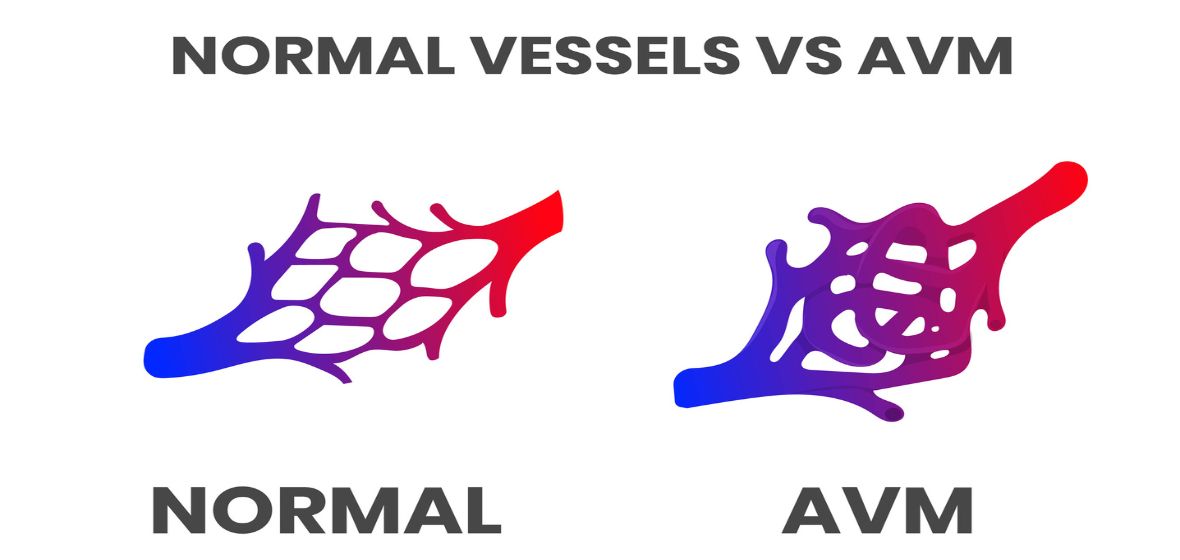
An arteriovenous malformation (AVM) is a tangle of abnormal blood vessels in any organ. Patients are usually born with them, like a birthmark. The tangle has an abnormal connection between an artery (or multiple) and veins, and there is shunting of blood flow. These lesions can cause neurological symptoms like seizures or even bleed due to the high-flow nature of them.
The most common presenting symptom of an AVM is bleeding or hemorrhagic stroke. Depending on the location of the AVM, this can cause any sort of symptoms such as headache, nausea, vomiting, seizure, numbness or weakness in one spot or another. Another common symptom is a seizure. Other presentation modes may include headache, transient ischemic attack (TIAs) or mini-strokes, or incidental findings with no symptoms.
A brain AVM is diagnosed using diagnostic cerebral angiography, where a catheter is inserted through either the wrist or groin artery. A dye is injected into the main blood vessels supplying the brain. While noninvasive imaging like an MRI or CT scan can be used and are often obtained before the angiogram, an angiogram is necessary for diagnosis.
At UofL Health, we offer all treatments for brain and spine AVMs. This includes:
- Conservative observation
- Radiation with or without preoperative embolization
- Surgical resection with or without preoperative embolization
- Palliative embolization (for cases where neither surgery nor radiation surgery is feasible, but patients have debilitating flow symptoms)
If you have any questions or concerns, be sure to speak with your provider or visit UofLHealth.org and make an appointment with our UofL Physicians – Neurosurgery. Same-day/week appointments for urgent and emergent neurosurgical conditions and evaluation appointments are now available by calling 502-588-2160.









